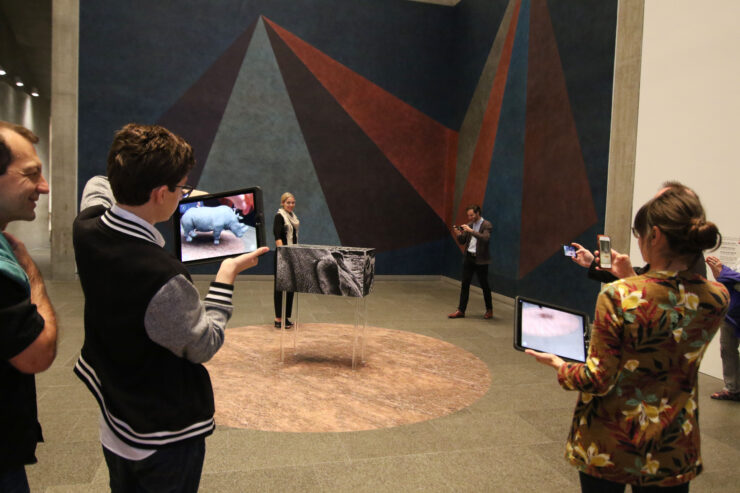NGC opens interactive gallery that showcases humanity’s destructive side
On Sept. 26, the public was welcomed to the National Gallery of Canada (NGC) for the opening of an exhibit named after the new epoch that some scientists believe us to have entered into—Anthropocene.
While, in July, the International Commission on Stratigraphy officially announced that we are a part of the Meghalayan age, which started over 4,200 years ago with the expansion of farming societies, there is a geological theory from the year 2000 that claims that we have entered into a new epoch, even more recently in history, titled the Anthropocene.
Unlike the Meghalayan age, the Anthropocene draws a direct connection between human activities, and the destruction of our planet. From the effects of mass pollution, to overpopulation, and the mass extinction of species, the Anthropocene claims that, in the past few hundred years, humanity has been altering the very geology of our planet.
The NGC’s Anthropocene which will run until Feb. 24, 2019, sought to bring visual evidence of this new epoch to art-lovers. “By drawing attention to the gravity of our actions, the artists present an opportunity for contemplation, and change—but, they don’t tell you what to think. You have to come up with your own conclusions,” Marc Mayer, director of the NGC, told the audience on Wednesday.
To draw attention to the work, the artists of Anthropocene, incorporated technology into the gallery. Visitors were encouraged to use iPads provided by the NGC, or download an app on their phones, and explore the exhibit through an interactive lense.
When the visitors lifted their devices up to certain paintings and sculptures in the gallery, the devices would trigger a video or 3D experience. For instance, by aiming their devices at the large photo of old-growth trees in British Columbia, viewers’ iPad’s would trigger a video, captured by the artists, of forestry personnel cutting down the same set of living trees.
“When you take on the whole planet as your subject … (you know that) this is going to be an ambitious project,” said Nicholas de Pencier, one of the gallery’s three collaborative artists. “One of the ways that we knew we needed to rise to the challenge (was) by applying all of what we have all been doing throughout our careers.”
However, for David Jaclin, a U of O professor, and head of the university’s research lab that studies the anthropocene, HumAnimaLab (HAL), the artworks displayed through cutting-edge techniques were not the only things worth studying at the vernissage.
“Another thing that I was interested in is how … people feel about that catastrophe—how (people panic), or not, when it comes to understanding the state of the planet and looking at the way that we live because there is a dissonance there,” said Jaclin. “We have all (kinds) of dissonance—we’re not addressing it.”
Indeed, Jaclin explained to the Fulcrum that human interactions are an essential part of how HAL tries to study the emergence of the anthropocene. The group contains students and faculty members from both science and anthropology disciplines, so the the scientific data that compliments their studies is equally as important as the human stories.
“The exhibit at the museum is interesting, because it’s that moment where something that used to be debated, conceived, and elaborated within academia, is spreading out,” said Jaclin. “I think it’s a very good thing because it gets people to think … about the state of the planet, and the stories about our future.”
The exhibit runs from Sept. 28 to Feb. 24, 2019 at the National Gallery of Canada. Tickets can be purchased at the museum, and cost seven dollars for students—with the exception of Thursdays, when it is free from 5 to 8 p.m.





